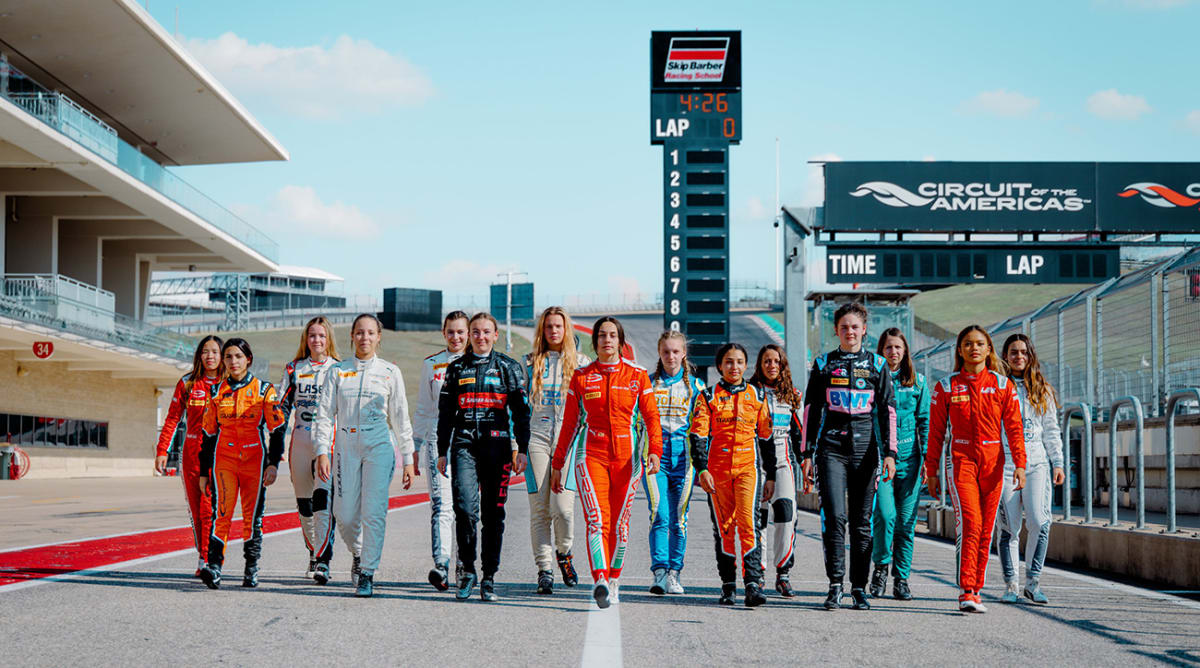Neus Santamaría is only 27 years old, but she already holds one of the most important roles in motor sports: race director. The job requires her to keep competitors as safe as possible on the track and ensure all rules and regulations are followed and that events run as smoothly as possible.
As the inaugural season of F1 Academy, the all-women racing series, comes to a close in Austin this weekend, Santamaría will complete her first year exclusively in the role. Previously, she juggled the position with a full-time role in teaching before making the jump to pursue a career in motor sports.
Growing up in Barcelona, Santamaría was surrounded by sports. She competed in figure skating for almost 15 years, and her family was always watching soccer and basketball. It was Santamaría’s father who introduced her to motor sports. He was a marshal, helping out at events, and he eventually worked to become a race director. He would often bring the family along with him. Santamaría “got hooked from the very first day. For me, there was no choice,” she says.
Racing was prominent at school, too. Despite a six-year age gap, a 10-year-old Santamaría became close friends with a schoolmate who was competing as a racing driver, and she would often go to support him at races. In fact, the pair is still close to this day. With all this influence and accessibility to the world of racing, Santamaría says it felt like a life in motor sports was just “normal.”

Courtesy of F1 Academy
“There are kids that play soccer, there are kids that like motorbikes, and then there’s kids that like motor sports,” she says. “What made it more normal was that my dad was into motor sports, and I had friends who were into it and that were racing drivers. That’s what normalized it for me and my friends.”
Despite all this, Santamaría still says she “fell into” motor sports. After joining a group of racing volunteers and officials on the weekends in Barcelona at age 16, she still didn’t think the industry would bring her any job opportunities. “I had so much fun, worked with my friends, improved my English and enjoyed watching the races, but I never thought it would get to [this] point,” she says. “I always thought this was going to be a weekend thing.”
When Santamaría was volunteering, there was a demand for individuals to help out in race control, which is the main hub where all of the big decisions are made at a race event. At the time, Barcelona needed young people who spoke good English to help with translating, so Santamaría stepped in, assisted with bringing official documents to teams and was able to sit in race control. “It was then when I saw them working that I thought I really want to be sitting there, doing what they do,” she says.
But becoming a race director isn’t as simple as taking a test. As well as the experience and the training, you need to have a promoter, or someone who recognizes your talents, who requests you to do your role for their championship. In 2022, before F1 Academy, Santamaría balanced four racing championships on weekends. This was also in addition to her regular job, a teacher at a special education school, during the week. This routine left her exhausted, and, by the end of the racing season, when the motor sports world would start planning their winter vacations, she would have to go back to her regular teaching job. Then one text changed everything.
“I was talking to guys at the racetrack in Barcelona and had heard there was this new championship starting,” she says of the F1 Academy. “I knew Silvia Bellot [an FIA F1 race steward] was helping [the F1 Academy] write regulations, and [I jokingly said,] ‘Imagine if Silvia texted me.’ Then one day, she texted me to say, ‘I have a proposal for you. Can I call?’”
As she concludes in her first year in the role, Santamaría hopes her appointment is a step in the right direction for inclusion in a sport that is still heavily male-dominated, both on the track and behind the scenes.







